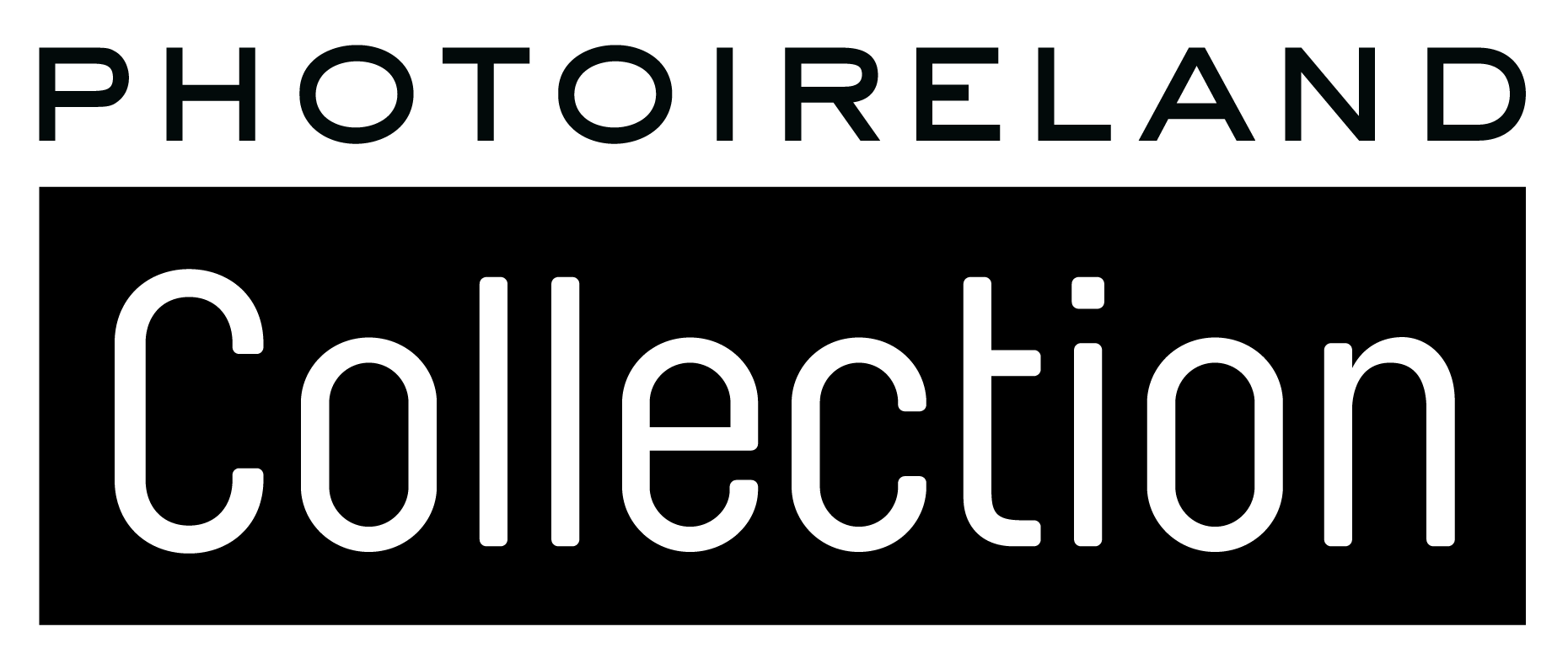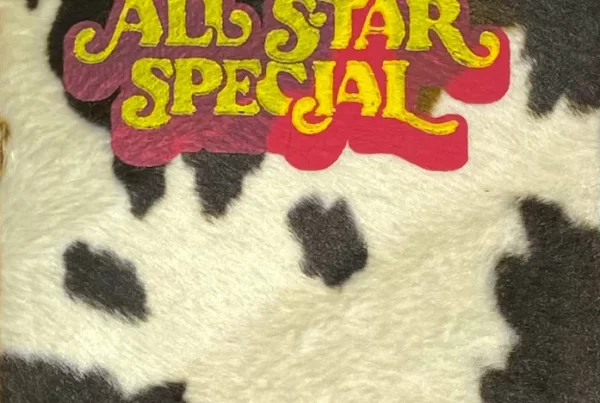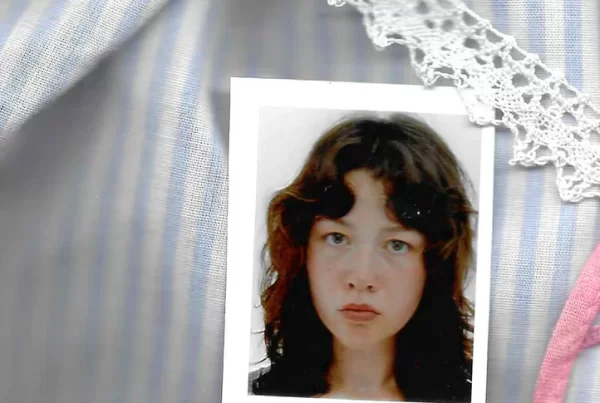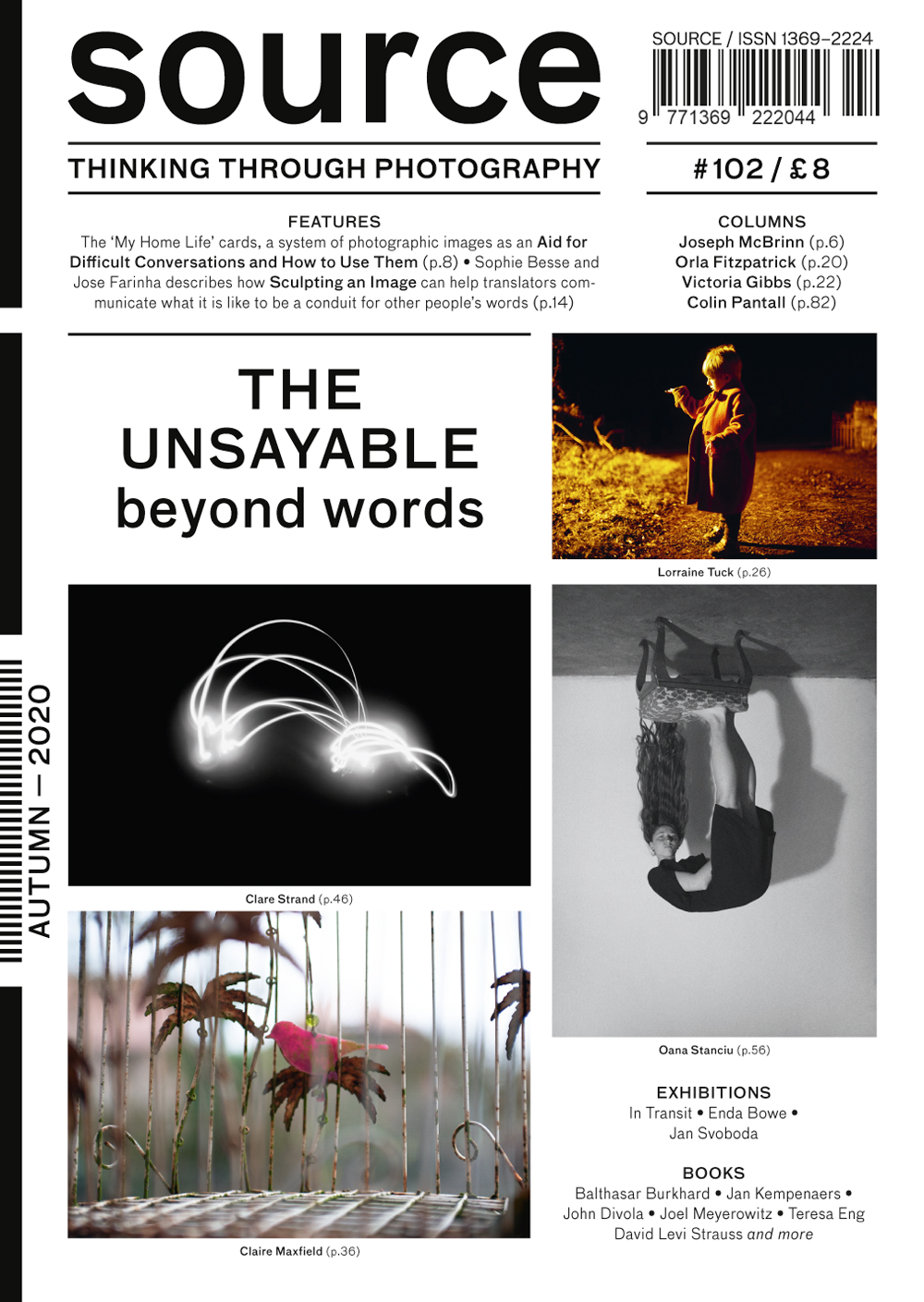
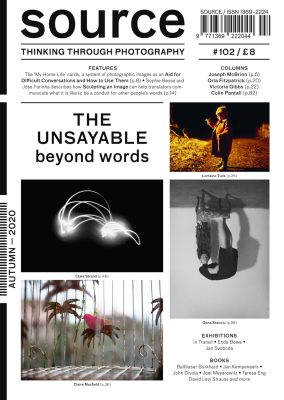 Source
Source
Autumn 2020: Issue 102
English
Edited by John Duncan and Richard West.
Softcover
86 pages
310 x 220 mm
2020
ISSN 13692224
Anyone who has studied photography at a university in the last 30 years will be familiar with the idea of considering images as texts. But sometimes words are insufficient. This could be for pragmatic reasons – you don’t have a language in common – or it could be that some things are not easily put into words but can be put into pictures.
It is easy to assume that words can be reduced to their meanings while pictures, whose meaning is elusive, cannot. Translators are a conduit for other people’s communication. But while a speaker’s whole meaning may be conveyed to their listener, the translator they pass through is also affected by the words, even though they are not their own. Theatre director Sophie Besse and photographer Jose Farinha worked with a group of translators employed in the public system (with the police, in prisons and hospitals) to create images to show this effect. In a collaborative process they ‘sculpted’ tableaux that dramatised their often difficult experiences. The resulting photographs show feelings that cannot be put into words.
For My Home Life, a training programme for care home managers, a set of cards showing simple but carefully selected stock photographs have been developed to enable conversations about difficult subjects. The images are not subtle, nevertheless their openness to interpretation encourages dialogue. Caroline Green, Belinda Dewar and Tamsin MacBride describe the cards’ purpose and use.
Lorraine Tuck’s Unusual Gestures depicts family life for a mother of two boys who have autism and two daughters, living on a farm in the west of Ireland. The ‘gestures’ in the title refers to her younger son Manus’s inscrutable signalling with his hands but might also describe the efforts of everyone in the family to cope with the differing needs of the children and the working life of a farm, something that would be hard to put into language but is clearly visible in the pictures.
What cannot be said in pictures and shown in words is immediately clear when photographs and text are combined. This is painfully apparent in Claire Maxfield’s An Unkindness of Ravens, work – made over a number of years – about domestic violence. The contrast between the silence of the pictures and what cannot be shown in the text combines to create something that is both invisible and brutally clear.
For our retrospective portfolio the photographer Clare Strand talks to Lucy Soutter about her work. Soutter’s fascination with conceptual art and Strand’s pleasure in systems and games describes an area of common interest. Whether in the use of photographic methods in workplace time and motion studies or the arbitrary selection of old magazine pictures based the availability of frames, they talk about a practice that is full of “photographic refusals, sublimations, deflections, substitutions and obfuscations”, where Strand says she “doesn’t necessarily feel the need to spell things out”.
Oana Stanciu is the director, photographer and performer in her own work: “trying to be someone else, or more often, something else”. The work is improvised with everyday objects and materials and, like anything created spontaneously, retains something enigmatic and inexplicable about it.
About the Magazine
Source is a quarterly photography magazine, available in print and as a digital edition, published in Belfast, Northern Ireland. They publish emerging photographic work and engage with the latest in contemporary photography through news, thoughtful features and reviews of the latest exhibitions and books from Ireland and the UK. Their website brings together an archive of writing and pictures from the magazine alongside current features.
source.ie
(source: https://www.source.ie/main/about.php)
